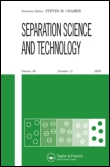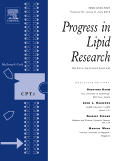
JOURNAL OF MEMBRANE BIOLOGY
Scope & Guideline
Bridging Biology and Technology through Membrane Studies
Introduction
Aims and Scopes
- Membrane Protein Dynamics and Functionality:
Investigates the dynamics, interactions, and functions of membrane proteins, including ion channels, receptors, and transporters, highlighting their roles in various physiological and pathological processes. - Lipid-Membrane Interactions:
Explores the interactions between lipids and proteins, as well as the implications of lipid composition on membrane structure and function, which are crucial for understanding membrane biophysics. - Biophysical Methods in Membrane Studies:
Utilizes a range of biophysical techniques, such as fluorescence and molecular dynamics simulations, to study membrane behavior, protein-lipid interactions, and membrane remodeling. - Membrane Role in Disease Pathogenesis:
Examines how alterations in membrane structure and function contribute to disease mechanisms, particularly in cancer, neurodegeneration, and metabolic disorders. - Therapeutic Strategies Targeting Membranes:
Focuses on the development of therapeutic approaches that target membrane components, including drug delivery systems and the design of membrane-active compounds.
Trending and Emerging
- Nanotechnology in Membrane Research:
The integration of nanotechnology, such as the use of nanoparticles and nanobodies, in enhancing drug delivery and immune responses is gaining traction, showing promise for novel therapeutic strategies. - Interdisciplinary Approaches to Membrane Biology:
There is an increasing trend towards interdisciplinary research that combines biology, chemistry, and physics, particularly in the study of membrane dynamics and interactions at the molecular level. - Role of Membranes in Cancer Biology:
A growing focus on the role of membrane dynamics and composition in cancer biology, including how tumors manipulate their membrane properties for growth and metastasis, is becoming more prominent. - Membrane Proteins as Drug Targets:
Research emphasizing the therapeutic potential of membrane proteins, especially in the context of drug design and development, is on the rise, reflecting a broader interest in targeting these proteins for various diseases. - Computational Modeling of Membrane Dynamics:
The use of advanced computational methods, including molecular dynamics simulations and bioinformatics, to study membrane behavior and protein interactions is emerging as a key area of research.
Declining or Waning
- Basic Membrane Composition Studies:
Research focused solely on the basic composition and properties of membranes, without linking to functional implications or disease relevance, seems to be less prevalent as the field shifts towards more applied and therapeutic contexts. - Traditional Electrophysiological Techniques:
While still important, traditional electrophysiological studies of ion channels are being overshadowed by more integrative approaches that combine biophysical methods with cellular and molecular biology. - Static Membrane Models:
The reliance on static or simplistic models for studying membrane behavior is decreasing, as researchers increasingly adopt dynamic and complex systems that better reflect biological reality.
Similar Journals

Critical Care and Resuscitation
Empowering clinicians with vital knowledge in emergency medicine.Critical Care and Resuscitation is a premier peer-reviewed journal published by Elsevier, focusing on the dynamic fields of Anesthesiology, Critical Care, and Emergency Medicine. Established in Australia, this journal has been a significant contributor to scholarly research since its inception in 1999, maintaining a strong reputation with a commendable impact factor, evidenced by its Q1 quartile rankings across its relevant categories for 2023. The journal's commitment to disseminating high-quality research is reflected in its elite standings: it ranks #7 out of 109 in Emergency Medicine, #12 out of 136 in Anesthesiology, and #16 out of 110 in Critical Care. Aimed at researchers, clinicians, and healthcare professionals, Critical Care and Resuscitation provides a vital platform for the latest advancements in patient care and clinical strategies, making it an essential resource for those eager to stay at the forefront of these critical disciplines. Although lacking Open Access options, its rigorous peer-review process ensures the publication of valuable insights that shape current practices and influence future developments in healthcare.

Journal of Structural Biology-X
Elevating Knowledge in the World of Biochemistry and BeyondThe Journal of Structural Biology-X, published by Elsevier, is a leading open-access journal dedicated to advancing the field of structural biology. Launched in 2019, it has quickly established itself as a vital resource for researchers, professionals, and students, boasting a prestigious Q1 ranking in Structural Biology for 2023 and achieving an impressive Scopus rank of #19 out of 49 in the biochemistry, genetics, and molecular biology category. With an E-ISSN of 2590-1524, this journal emphasizes accessibility and collaboration by providing open access to its comprehensive collection of research articles, reviews, and cutting-edge methodologies. The scope of the journal encompasses significant themes within structural biology, including protein structure, molecular interactions, and imaging techniques, facilitating interdisciplinary dialogue and innovation. Join the global community of scientists and contribute to the body of knowledge that propels our understanding of molecular architecture through the Journal of Structural Biology-X.

BIOCHIMICA ET BIOPHYSICA ACTA-BIOMEMBRANES
Pioneering Research in Biochemistry and BiophysicsBIOCHIMICA ET BIOPHYSICA ACTA-BIOMEMBRANES is a prestigious journal dedicated to advancing the field of biomembrane research, published by Elsevier. With a notable track record since its inception in 1967, this journal operates under the dual ISSN 0005-2736 and E-ISSN 1879-2642, and has firmly established itself within the scientific community by ranking in the top tiers of various disciplines, including Q2 in Biochemistry and Cell Biology, and Q1 in Biophysics as of 2023. Its impressive Scopus rankings further underscore its importance, with a rank of 24 in Biophysics reflecting its strong impact on ongoing research. Although it does not offer open access, the journal provides comprehensive insights and breakthroughs essential for scientists, researchers, and advanced students focused on biophysical and biochemical aspects of membranes. By disseminating pivotal findings, BIOCHIMICA ET BIOPHYSICA ACTA-BIOMEMBRANES contributes significantly to understanding cellular mechanisms, thereby serving as a vital resource for professionals aiming to explore the complexities of biological membranes.

SEPARATION SCIENCE AND TECHNOLOGY
Connecting Scholars in the World of Separation ScienceSEPARATION SCIENCE AND TECHNOLOGY is a distinguished journal published by Taylor & Francis Inc, offering critical insights and advancements in the fields of chemistry and chemical engineering. With an ISSN of 0149-6395 and E-ISSN of 1520-5754, the journal spans a rich history from 1978 to 2024, providing a platform for scholarly articles that delve into innovative separation processes and technologies. Notably recognized in the 2023 category quartiles, the journal ranks Q2 in Chemical Engineering and Chemistry, alongside Q3 in Filtration and Separation and Process Chemistry and Technology, reflecting its significant impact and relevance in these research areas. With an impressive Scopus ranking, including a rank of #10/19 in Filtration and Separation, SEPARATION SCIENCE AND TECHNOLOGY is crucial for researchers and professionals seeking to enhance their understanding of separation techniques and applications. Although it operates under a subscription model, its contributions remain indispensable for the advancement of knowledge and technologies in separation science.

Membranes and Membrane Technologies
Exploring the Future of Membrane InnovationMembranes and Membrane Technologies is an innovative journal dedicated to advancing the fields of chemical engineering, chemistry, and materials science through the exploration of membrane science and technology. Published by PLEIADES PUBLISHING INC, this journal offers vital insights into the efficient design, synthesis, and application of membranes across diverse industries, aiming to enhance water treatment, energy generation, and various separation processes. With an ISSN of 2517-7516 and an E-ISSN of 2517-7524, the journal is recognized for its impactful contributions, holding a Q3 category ranking in multiple fields as of 2023. Researchers and professionals will find a wealth of open-access articles that promote the sharing of knowledge and foster collaboration in this rapidly evolving domain. As it converges its mission from 2019 to 2024, Membranes and Membrane Technologies remains an essential resource for those committed to pushing the frontiers of membrane research and application.

JOURNAL OF BIOENERGETICS AND BIOMEMBRANES
Exploring the Dynamics of Life at the Cellular LevelJOURNAL OF BIOENERGETICS AND BIOMEMBRANES, published by SPRINGER/PLENUM PUBLISHERS, is a leading journal dedicated to the study of bioenergetics and biomembranes, covering essential topics such as cellular energy transformation and membrane dynamics. Since its inception in 1976, the journal has developed a robust reputation within the scientific community, currently holding a Q3 ranking in Cell Biology and a Q2 ranking in Physiology for 2023. Boasting a prestigious Scopus Rank in both Biochemistry and Physiology, it serves as a crucial platform for disseminating pioneering research findings. With its commitment to quality and innovation, the journal plays a significant role in advancing our understanding of the fundamental processes that underlie life at the cellular level. Although it does not offer open access options, the journal remains accessible through universities and research institutions, ensuring that vital research is widely shared among scholars, professionals, and students alike. The JOURNAL OF BIOENERGETICS AND BIOMEMBRANES is essential for anyone seeking to contribute to or stay informed about developments in this dynamic field.

BIOLOGICHESKIE MEMBRANY
Pioneering Insights into Cell FunctionalityBIOLOGICHESKIE MEMBRANY is a critical journal in the field of Cell Biology and Molecular Biology, published by MEZHDUNARODNAYA KNIGA in the Russian Federation. With an ISSN of 0233-4755, this journal has been serving the academic community since 1996 and continues to publish cutting-edge research that advances our understanding of biological membranes and their functions. Despite being classified in Q4 quartiles for both Cell and Molecular Biology in the 2023 category rankings, the journal presents a unique platform for emerging research within these pivotal areas. Researchers, professionals, and students alike will find valuable insights in its pages as it seeks to foster a collaborative environment that encourages knowledge sharing. Although currently not available as an open-access journal, it remains an essential resource for those looking to deepen their knowledge and contribute to ongoing discussions in the biological sciences. The journal’s commitment to publishing quality research is underscored by its continuous coverage until 2024, making it a sustained reference in the field.

Membrane and Water Treatment
Advancing Knowledge in Membrane and Water Treatment TechnologiesMembrane and Water Treatment is a prominent academic journal published by TECHNO-PRESS, dedicated to the fields of chemical engineering and water science. With an ISSN of 2005-8624 and E-ISSN 2092-7037, this journal aims to disseminate innovative research and technological advancements related to membrane technologies and water treatment processes. Since its inception in 2010, it has steadily contributed to the body of knowledge, achieving a Q3 ranking in Chemical Engineering and a Q4 ranking in Water Science and Technology as of 2023. Positioned within the 35th percentile of its respective categories in Scopus, it serves as a critically accessed platform for researchers and professionals eager to explore cutting-edge methodologies and solutions to water management challenges. Based in South Korea, Membrane and Water Treatment is committed to providing a scholarly environment where interdisciplinary and collaborative research can flourish, ensuring that readers remain at the forefront of developments in this essential field.

BIOPHYSICAL JOURNAL
Transforming discoveries into groundbreaking applications.BIOPHYSICAL JOURNAL, published by CELL PRESS, is a leading interdisciplinary platform dedicated to advancing the field of biophysics. With an ISSN of 0006-3495 and an E-ISSN of 1542-0086, this esteemed journal has garnered a prestigious position within the academic community, reflected in its ranking as Q1 in Biophysics for the year 2023. Its Scopus rank of #44/152 in the category of Biochemistry, Genetics, and Molecular Biology showcases its significant influence, with a notable percentile of 71st. Since its inception in 1960, the journal has published cutting-edge research that explores the quantitative and qualitative aspects of biological phenomena, making it essential for researchers, professionals, and students in the field. While the journal operates under a subscription model, its rigorous peer-review process ensures the highest quality of published work, contributing to groundbreaking discoveries and innovations that shape the future of biophysics. For more information or to explore the latest research, please visit the journal’s platform.

PROGRESS IN LIPID RESEARCH
Exploring the Complexities of Lipid MetabolismProgress in Lipid Research, published by Pergamon-Elsevier Science Ltd, is a leading scientific journal dedicated to advancing the understanding of lipid biology and its implications for human health. With an impressive impact factor, it ranks in the Q1 quartile in both Biochemistry and Cell Biology as of 2023, reflecting its vital role in disseminating high-quality research. Covering a wide scope of topics from lipid metabolism to cell signaling pathways, the journal serves as a key resource for researchers, professionals, and students alike, striving to elucidate the complex functions of lipids in various biological systems. With publication converging since 1978 and extending to 2024, Progress in Lipid Research continues to provide innovative insights and foster collaboration within the scientific community, solidifying its reputation as an essential platform for lipid research.